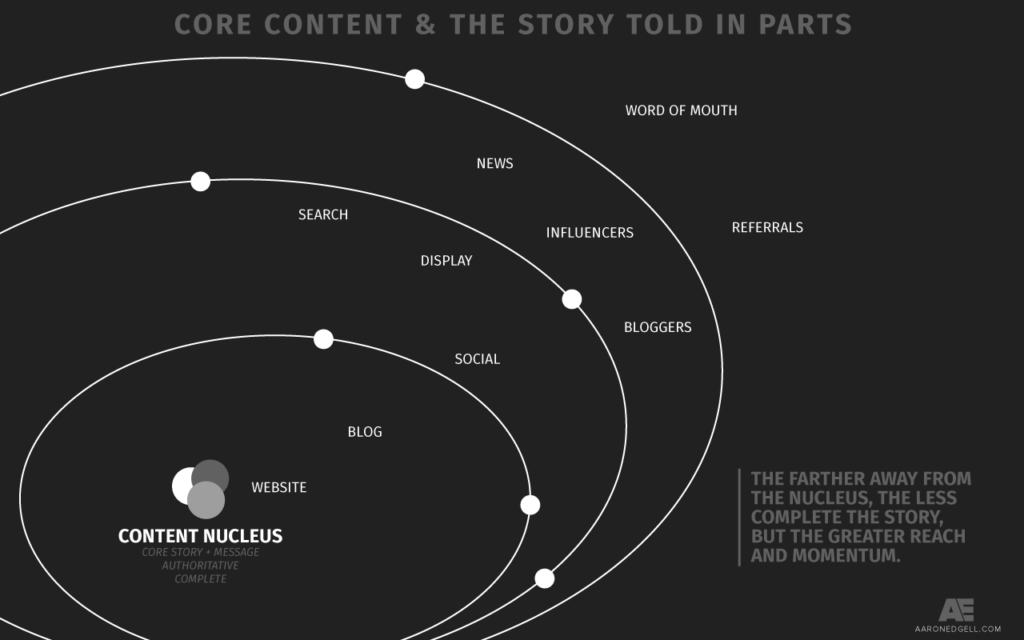Starting Flywheels: Inbound & Micro-Influencers
When you're launching something new or joining a stagnant company it's critical to get short-term wins. This isn't really about that. Because it's also important to execute for long-term, sustainable growth. And it has to start immediately. Quick wins and long-term growth aren't mutually exclusive.
This particular data (screenshot from actual Google Analytics above with years and Y-axis removed) is one case study of many where vision + patience + work helped grow New Users from Organic Search to a website, which ultimately turned into growth in paying customers.
And this is not meant to be "The Ultimate Guide blah blah blah" because I've found that the application of marketing and business strategies is more nuanced than a clean meant-for-everyone guide seeks to accomplish.
TL;DR
- Actions taken
- Fixed core technical issues and added better capability for content publishing
- Started publishing content after a backlog had been sufficiently created
- Then added influencer marketing by partnering with micro-influencers with audiences anywhere from 500–15,000 and prioritized the influencers who also had an active personal website so we could get mentions and links on the web (we had practically zero links when I joined)
- Coordinated the content publishing calendar on our website with the publishing of influencers with a priority on consistent publishing and mentions
- Results
- Eventually saw growth in New Users and subsequently, more Revenue – with content published 6+ months ago primarily growing the fastest from a new user perspective; highlighting the need for patience
Prerequisites: Before we go on, here is your first decision tree prior to the applicability of this content:
- Do you have plenty of traffic and new users? If yes, then you might use your scarce resources for Optimization.
- Is there little traffic and stagnant new users? If yes, then you'll want to work on Expansion. That's what this approach is about.
Expansion
Expansion strategies focus on growth (I know, obvious). Not just growth in costs, though. But expansions require investment, either through advertising or effort. If you have the funds, do both.
A quick PAUSE because you don't want to chase expansion before getting the basics right.
Don't overlook the obvious. Can users take necessary actions? Sounds obvious, right? More than once in my experience, I have discovered that some inquiry forms don't work and a few cases (e-commerce) where people couldn't give us money when they wanted to. Don't assume that because it worked for you in your initial audit that it works for everyone. Take time to be thorough. This isn't the time for optimization to improve the checkout (or lead capture) process, it's just to make sure it's possible for everyone who wants to do it.
Inbound Strategy through meaningful content creation. And not just because it's on a list of marketing things you should do.
Creating content in the form of blog posts may not be right for you, but I've discovered it's beneficial for most. One way I think about content is articulated as a Content Nucleus (embedded the original visual below), where the source of truth for your brand and its story lives deep on the website. The blog is only one step removed from that core.

Why choose content creation in the form of blog posts?
Reason #1 In this scenario, we had deep expertise in a specific area. We already had dense white papers, but they weren't really digestible by the general consumer of the product.
Reason #2 We also found questions our customers were asking or searching for on Google weren't being answered well. In some cases, the estimated search volume was low. If you find yourself in that position, don't fret. Create the content. Capturing the long tail of searches will build over time in lower competitive terms.
How often should we publish? It depends. You should publish as often as you have the content. I found prioritizing consistency is most important, assuming you already know that quality (relevant topic + thorough and credible answer) is the top priority. Posting a few times a week still seems to win experiments, so I like to start with three posts a week as long as I have enough content to sustain the need for consistency.
Influencers who fit the brand. And not just Instagram posts.
You'll find plenty of tools to help you find influencers. If that's what you're looking for, start with Klear or Upfluence or just Google "find influencers" and there will be plenty of people with options.
We found influencers without 3rd party tools by searching hashtags related to the type of profile and posts we thought our audience would care about. What are the most used hashtags? That becomes a primary starting point.
Track them all in a spreadsheet. Include name, profile links, website (do they have a personal website with substantial content), engagement metrics, etc.
Don't be so anxious to get an influencer that you overlook whether or not they fit the brand. Review their content, their interaction with their community, and what they stand for.
Get their attention (likes, comments, etc.) and then reach out directly.
We offered product. For some, it was a lot of product. For others, it wasn't. Sometimes it was a little bit of cash, too, but we tried to stick to product. We wanted them to genuinely use it. And we asked them for honest feedback.
We worked to concentrate the posts to maximize the frequency of influencer posts and our blog posts. We got more traffic and more links to the website.
As time went on, we saw growth. Organic Search visits increased. The pages that saw the most traction were published at least 6 months prior.
